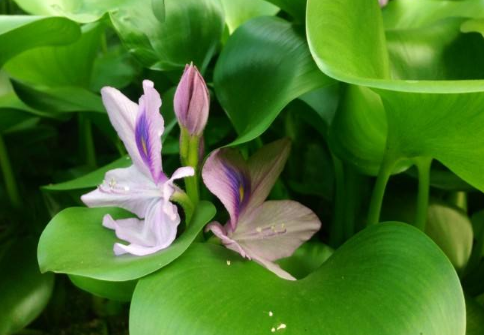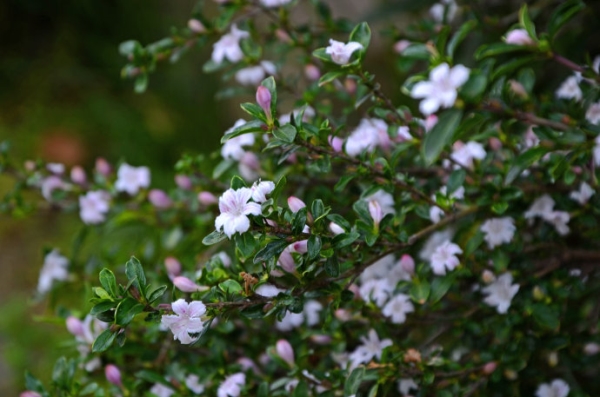The Propagation method of Rabdosia angustifolia
seed reproduction
The seeds have a hard shell. Before planting, soak the seeds in water or wet towels, and wait for the seeds to germinate gradually. Generally, seeds can be sown in early April. Lotus pond mud can be selected for cultivation. Seeds can be evenly sprinkled in the soil, watered thoroughly, covered with glass for insulation. Floating leaves can grow in one month.

division propagation
The plant division of Chinese cabbage is carried out in spring and summer, and its growth ability is strong. The stolons formed by branches are separated, roots and buds grow on each stem node, cut off and cultivated in the original pot. When they grow into small plants, they can be planted in different pots.
The cultivation method of Chinese cabbage 1. Substrate
Common pond mud can be selected as substrate for cultivation of Chinese cabbage, which should not be too fertile, otherwise the branches and leaves grow too dense, affecting flowering.
2. illumination
At ordinary times, ensure sufficient light, can be placed in the courtyard of the garden care, do not shade can also grow very well.
3. moisture
The vegetable needs more water, must not lack water, otherwise it will make the leaves dry, winter should also keep water in the basin, put in the sun can be.
The cultivation method of Chinese cabbage Chinese cabbage is gentianaceae, Chinese cabbage belongs to shallow water plants. Stems slender and soft and branched, creeping growth, rooting nodes, floating in the water or born in the soil. The leaf shape of water lily is small and unique, the bright yellow flowers stand out of the water surface, and the flowers have a long flowering period. It is a good product for decorating the courtyard with water features. Generally dry 3-5 months green, 5-10 months flowering and fruit, 9-10 months fruit maturity. Plant edge open lace fruit, to frost, water part that is dead. In warm regions, the green grass period is about 240 days, and the flowering period is about 150 days. The fecundity and regeneration ability of Chinese cabbage is quite strong. It reproduces both from seeds and from rhizomes. When the fruit ripens, it dehisces on its own. Seeds spread by water flow; rhizomes extend obliquely in about 10cm of soil, rooting and budding. After overwintering, rhizomes or stolons are interrupted, and new plants grow independently from buds. With its creeping branches, rhizomes into water or buried in mud, it is easy to survive. It is also very regenerative, and it can still regenerate after 3-4 harvests in the growing season. Potted vegetables are divided into pots once every 2-3 years depending on the size of the pots and the crowding of the plants. In winter, water should be kept in the basin, and winter can be wintered by putting it in the lee. The water depth is about 40 cm, and the potted water depth is about 10 cm. With ordinary pond mud as substrate, should not be too fat, otherwise lush branches and leaves, flowers but rare. Such as yellow leaves, can be buried in the pot a small amount of compound fertilizer or fertilizer tablets. Usually keep enough sunshine, basin must not lack water, otherwise it is easy to dry up. The management of Chinese cabbage is extensive, and aphids should be prevented and controlled during the growth period. This article comes from: Bath Flower Valley Flower Network
- Prev

Culture method of Phoenix Eye Blue
1. Temperature Phoenix blue likes the warm environment, the suitable growth temperature is 18 ℃-23 ℃, the adaptability is very strong, high temperature can also grow, more hardy, but the temperature below 10 ℃ will stop growing. two。 Light Phoenix eyes blue like the sun, to receive at least four or five hours of light every day, lack of light will affect photosynthesis
- Next

The breeding mode of snow in June
The ramet method is usually carried out around the beginning of spring and March before sprouting, or at the end of autumn when it stops growing. The mother plant is dug out of the soil with roots and is divided into several small clumps with hands or scissors. Each clump should be transplanted into flowerpots with 3 branches and roots in the lower part. Scatter and insert to make use of open space
Related
- Fuxing push coffee new agricultural production and marketing class: lack of small-scale processing plants
- Jujube rice field leisure farm deep ploughing Yilan for five years to create a space for organic food and play
- Nongyu Farm-A trial of organic papaya for brave women with advanced technology
- Four points for attention in the prevention and control of diseases and insect pests of edible fungi
- How to add nutrient solution to Edible Fungi
- Is there any good way to control edible fungus mites?
- Open Inoculation Technology of Edible Fungi
- Is there any clever way to use fertilizer for edible fungus in winter?
- What agents are used to kill the pathogens of edible fungi in the mushroom shed?
- Rapid drying of Edible Fungi

